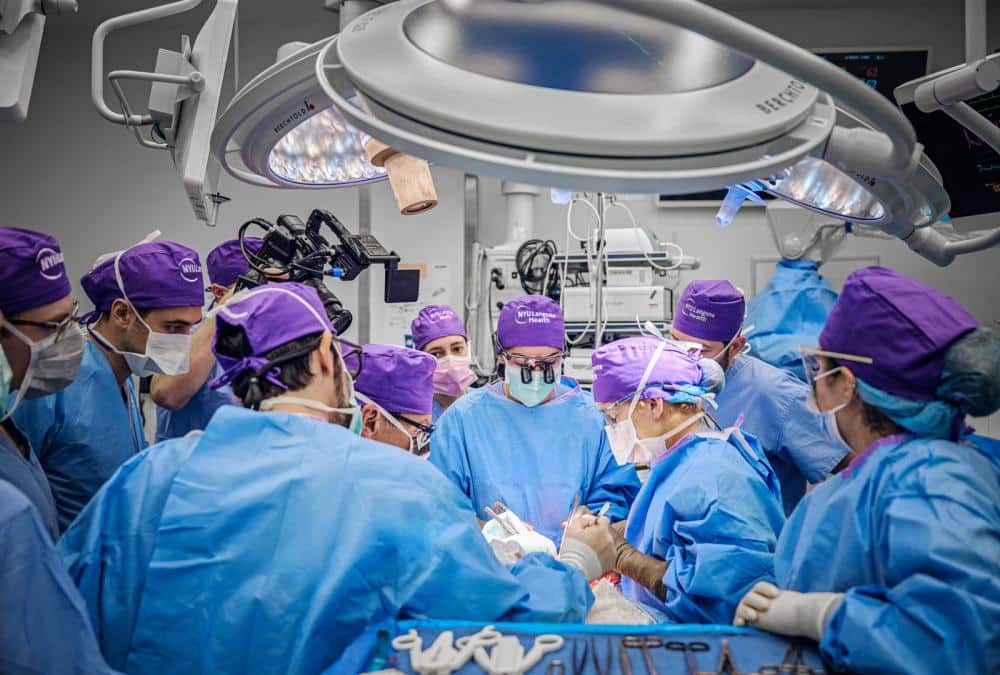In the world of medicine, every now and then we witness an event that redefines the boundaries of what is possible. This week's announcement from doctors at NYU Langone Health is just such a moment. They successfully completed the first transplant of part of the face and an entire eye.
This procedure, performed on a severely burned 46-year-old man, not only opens new frontiers in reconstructive surgery, but also raises profound questions about the nature of seeing and being.
The challenge of visual recovery
Unfortunately, the patient has not yet recovered his vision in the transplanted eye (and may never regain it). However, early signs indicate that the eye is healthy and potentially capable of transmitting neurological signals to the brain. Jeffrey Goldberg, professor and chair of ophthalmology at Stanford's Byers Eye Institute, emphasizes the importance of this transplant as a proof of principle. Indeed, he is also keen to highlight the main problem: the regeneration of the optic nerve, which has not yet been successfully demonstrated in humans.
Interviews and multimedia materials, including before and after photos and a video of the procedure are available here .
Technological and surgical innovations of a face and eye transplant
The surgical precision necessary for face and eye transplantation was made possible thanks to cutting-edge techniques. They are called three-dimensional (3D) surgical planning e specific cutting guides for the patient. What is it about? These innovations have allowed precise alignment of the bones and optimal placement of the implantable plates and screws.
And it's a first: Although face and cornea transplants have been performed in the past, to the knowledge of the NYU Langone team, this is the first successful case of a transplant of an entire eye (with or without a face). The first partial face transplant dates back to the 2005 in France, and as of 2021, nearly 50 face transplants have been conducted worldwide.

The patient journey
The transplant recipient, Aaron James, a military veteran from Arkansas, suffered severe burns to his face and left arm following an electrical accident in June 2021. After being in a medically induced coma for six weeks and undergoing multiple surgeries, James and his wife Meagan have accepted the possibility of a face transplant, which also included the donor eye.
The transplant, performed over Memorial Day weekend in May 2023, included the nose, left eyelids and eyebrows, lips, underlying bones of the skull, nose and chin, zygomatic bones, and all muscle and tissue nerves under the right eye. The entire left eye and optic nerve were transplanted, along with stem cells from the donor's bone marrow, in hopes of aiding the regeneration of the optic nerve.
Patient recovery
James has shown good recovery, being able to speak and eat independently. Although the mobility of the lips and facial muscles is still limited, noticeable improvement is expected over time. His ability to maintain a sense of humor was crucial to his recovery.
Six months after the transplant, James has still not recovered his vision in the transplanted eye, tests continue to show that the eye receives good blood flow and maintains normal eye pressure. Current studies point to the possibility of some communication between the eye and the brain, but further testing is needed to confirm these preliminary findings.
Conclusions and reflections
This transplant represents not only a triumph of medical science, but also a step towards new possibilities for recovery for thousands of people suffering from similar injuries. While there are still many challenges to overcome, the optimism and hope that comes from this success is immense. The medicine of the future, once relegated to science fiction books, is becoming reality, and with it, the promise of a new life for many.


